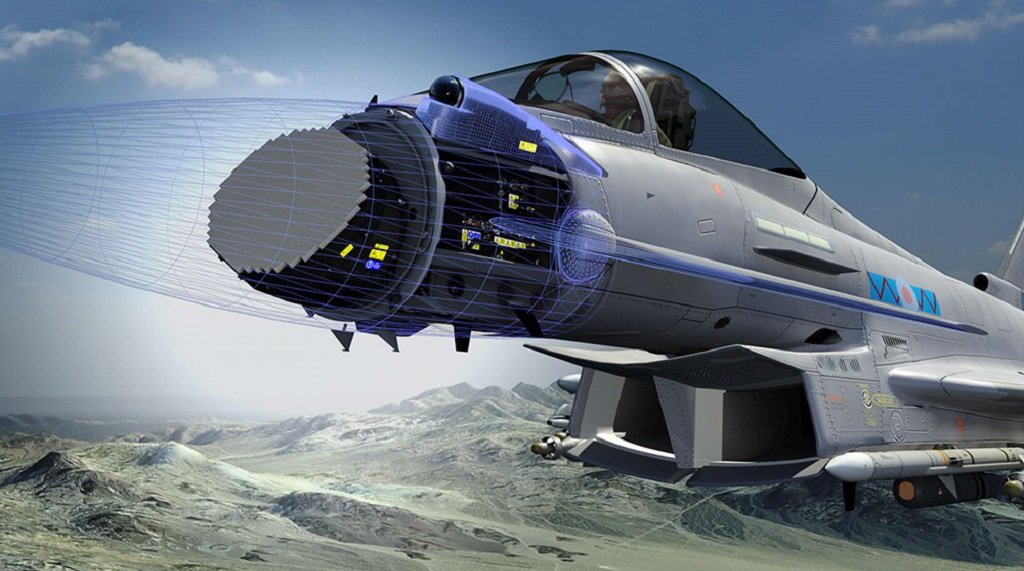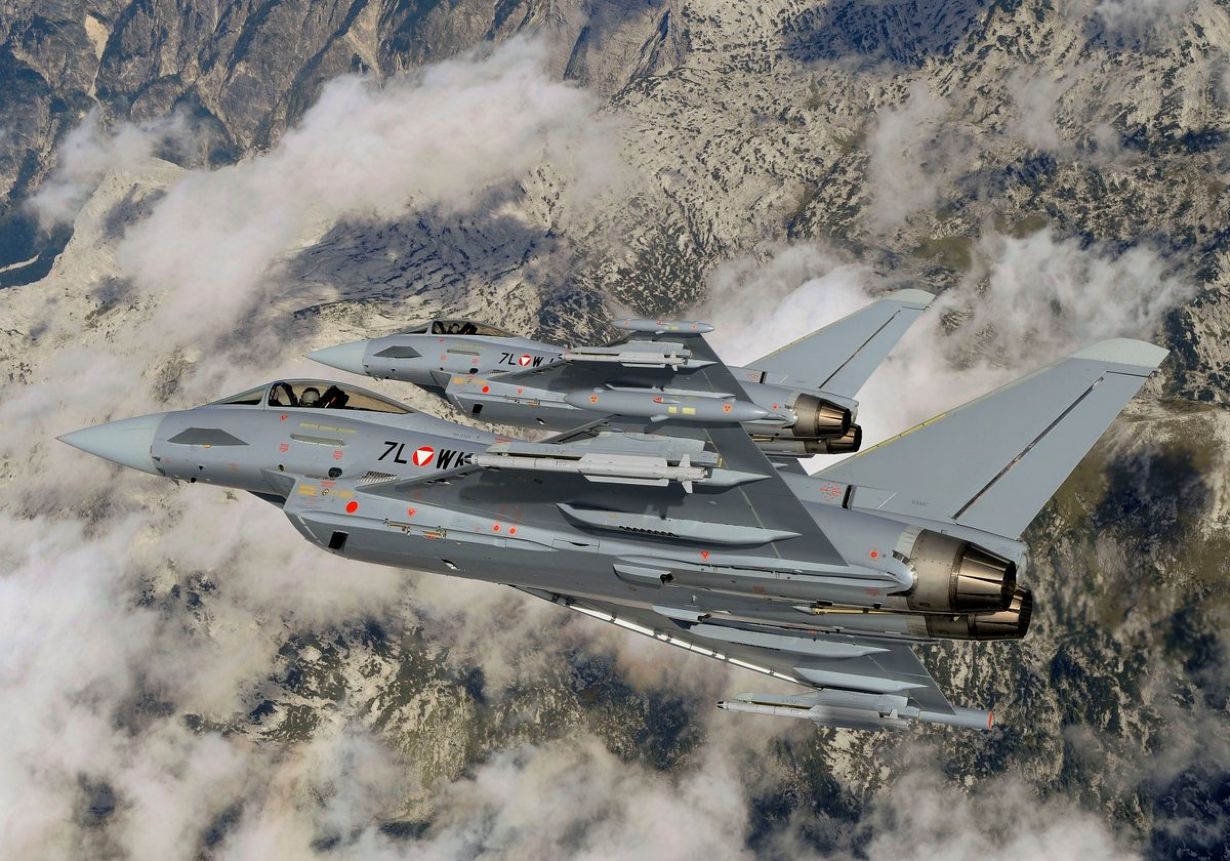The Italian multinational defense company Leonardo is testing the new high-tech European Common Radar System (ECRS) Mk2 at its World War 2 (WW2) era facility in the UK as part of a $2.8 billion (£2.35) upgrade program for British Eurofighter Typhoons.
Nuclear Armageddon! B-52, F-16, Or Tu-160, Which One Will Fire Nukes If NATO, Russia ‘Nuclear Drills’ Go Wrong?
Iranian Missiles For Russia? After Success With ‘Killer UAVs’, Moscow Could Buy Ballistic Missiles From Tehran
In July, the UK Ministry of Defense announced a $2.8 billion investment package in new capabilities for its Royal Air Force (RAF) Typhoon aircraft, including the delivery of the state-of-the-art ECRS Mk2 radar.
The ECRS Mk2 radar is expected to transform the Eurofighter Typhoon’s air control by providing the fighter jet with a world-leading electronic warfare capability that will enable it to simultaneously detect, identify and track multiple targets in the air and on the ground.

The radar is intended to support operations in the most challenging situations, equipping pilots with the ability to suppress enemy air defenses using high-powered jamming and engage targets from outside the reach of threats.
This new state-of-the-art radar system is being tested at Leonardo’s Edinburg facility in the UK.
Last week, Minister @iainastewart enjoyed visiting @Leonardo_UK in Edinburgh to see the cutting-edge technology they design and build in Crewe Toll, including the #ECRS Mk2 Radar for @DefenceHQ, and hearing about how the business is supporting #STEM jobs in Scotland. pic.twitter.com/yHz9POULp8
— Office of the Secretary of State for Scotland (@ScotSecofState) September 2, 2022
The test facility is about the size of a university lecture hall, sealed shut with 30-foot-high metal doors and walls lined with foam spikes to ensure the accuracy of tests performed on the new radar system.
The site was built by British engineering firm Ferranti in 1943 to manufacture gun sights for the Supermarine Spitfire fighter plane, one of the iconic aircraft of World War II, which the RAF and many Allied countries used against Nazi Germany.
The site is now owned by Italian defense contractor Leonardo, following a series of mergers in the defense industry.
The ECRS Mk2 Radar For Typhoons
The ECRS Mk2 is an all-new active electronically scanned array (AESA) radar to provide Typhoons with enhanced electronic warfare capabilities.
It shares no overlaps in hardware with the original Typhoon Captor radar, nor with the other AESA-equipped Captor-E variants such as the ECRS Mk0 for Kuwait and Qatar or the ECRS Mk1 for Germany and Spain. However, the new radar will have a common human-machine interface.
Apart from the RAF Typhoon, the ECRS Mk2 will also lay the groundwork for the next generation of radar which will be fitted in the nose of the planned fifth-generation Tempest fighter jet.

A remarkable feature of this radar is that it uses a ‘re-positioner’ mounted on a single rotating joint, as opposed to the double swashplate arrangement of the Captor-E.
As EurAsian Times has discussed before, using a re-positioner enables the radar to be tilted on either side, offering a much broader ‘look’ angle beyond 90 degrees off the centerline of the jet.
This can provide significant tactical advantages in specific scenarios, for example, if the fighter has to perform a ‘beaming’ maneuver to evade detection by an enemy fighter.
Beaming involves a fighter turning 90 degrees away (perpendicular) to an enemy’s pulse doppler radar array, which uses a doppler shift to measure a target’s relative velocity. It filters out the low relative velocity objects, like ground clutter and the ‘beaming fighter,’ which are not moving towards or away from the enemy radar.
This is a beneficial tactic when the radar is positioned at a higher altitude than the beaming aircraft and trying to lock up its target in a look-down-shoot-down scenario where ground clutter is prevalent.

Whereas, in the case of a typically fixed AESA radar or mechanically scanned array, performing a beaming maneuver would mean the fighter jet is losing its radar picture of the enemy it is trying to evade.
In the absence of third-party sensors feeding this data to the beaming fighter via data link, its pilot loses sight of the tactical situation when it is most important.
Even worse is that any radar-guided missile fired from the now-beaming fighter will not be able to receive mid-course updates. Those missiles’ chances of killing will reduce, particularly if fired initially at long range.
This is where a re-positioner comes in, which can steer the radar antenna on either side, providing a far greater sensor field of view, and enabling lower detectability due to enhanced situational awareness for the pilot in case of beaming maneuvers.
The flight tests of the ECRS Mk2 aboard a Eurofighter test aircraft are expected to take place in the final quarter of 2023, with the plan to realize the initial operating capability (IOC) by 2030.
The selected testbed Typhoon ZK355 is already at BAE Systems’ Wharton facility undergoing preparations.
The prototype ECRS Mk2 radar is expected to be delivered to Wharton by the end of 2022, and a full system critical design review will be completed for the production radar.
- Contact the author at tanmaykadam700@gmail.com
- Follow EurAsian Times on Google News




